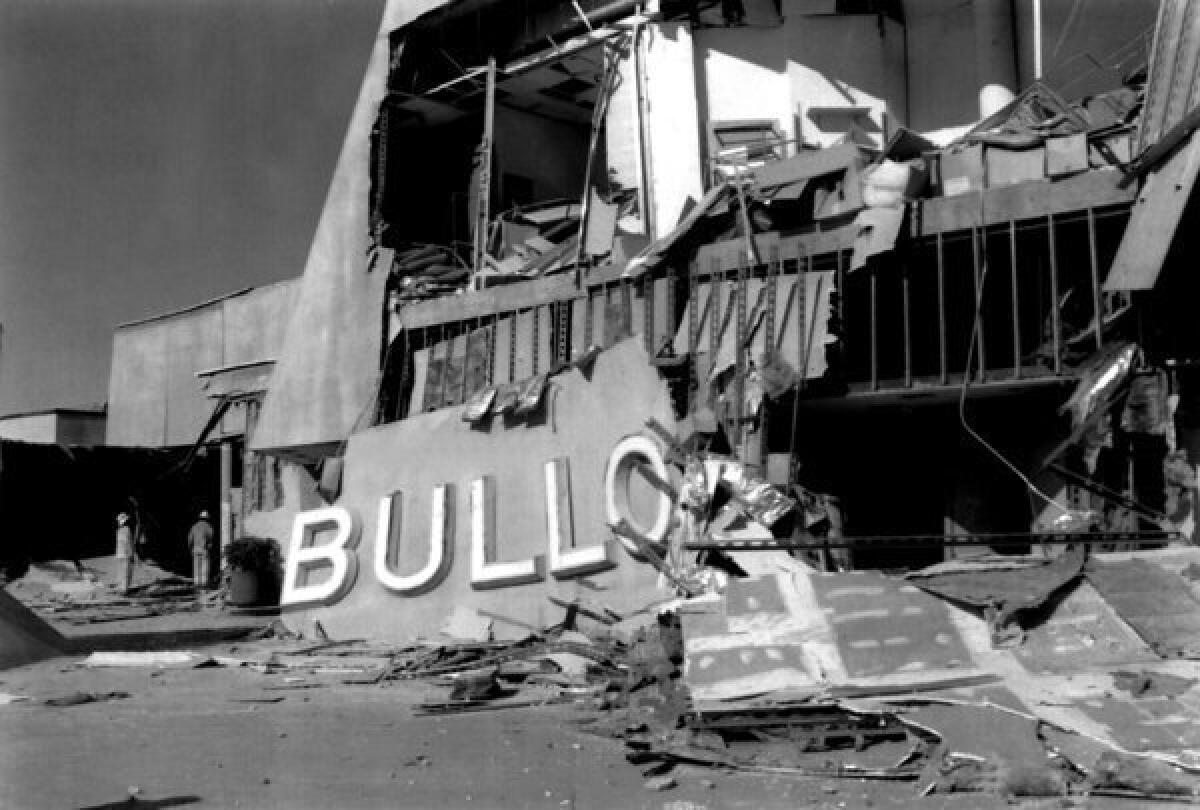List of buildings at risk in big earthquake to be released to city

- Share via
Ending a three-month standoff, University of California researchers announced Friday they will give Los Angeles officials the addresses of about 1,500 old concrete buildings that are potentially at risk of collapse during a major earthquake.
The move is significant because it will provide city officials a starting point to identify the concrete buildings most likely to collapse in a future earthquake. The researchers estimate that about 75 out of the 1,500 concrete buildings could collapse in a significant earthquake.
The failure of just one concrete buildings could cause hundreds of deaths.
Photos: The perils of concrete
The researchers emphasized the addresses were not a list of dangerous buildings – but were a list of buildings that would need to be examined more closely to gauge their vulnerabilities. They expected to give the addresses to city officials next week.
The list has been an issue of controversy for months after a Los Angeles Times story in October reported that more than 1,000 old concrete buildings in Los Angeles may be at risk of collapsing in a major earthquake. The story reported how a team led by a UC Berkeley engineering professor declined to make the list public, saying his team could be exposed to liability.
When Los Angeles building officials asked for the list at Mayor Eric Garcetti’s request, the researchers said they would investigate “the legal and ethical constraints” of releasing what was then preliminary research data.
FULL COVERAGE: California earthquakes
But talks have been continuing between the city and the scientists, and on Friday, the researchers announced they have completed their project, funded by a $3.6 million federal grant, and would give the underlying data to the city.
“We would like to be helpful to the city, to help them move forward” on this issue, said UC Berkeley engineering professor Jack Moehle.
“It’s the time to release the data,” Moehle said.
INTERACTIVE MAP: L.A.’s hidden dangers
Moehle and his team of researchers emphasized the list of addresses is a list of concrete buildings in Los Angeles built before 1980 – which does not mean all will collapse in an earthquake. Past earthquakes around the world suggest that about 5% of old concrete buildings are estimated to collapse in a major earthquake, they said.
Further study needs to be done on any particular building to assess its risk of collapse and whether it needs to be retrofitted, the researchers said. The list contains information on the size of the buildings, their assessed value, the number of stories and their type of use. They said the information can help the city to form policy, weighing the level of risk with the cost of making them safer.
The researchers also said the list was based on public information, such as data from the Los Angeles County assessor. They said they did not assess or inspect individual buildings.
In a statement released by the mayor’s office, city building officials said they look forward to reviewing the full study once it is completed.
Other advocates have urged that the list be given to the city, which would give building officials a head start in tackling the concrete problem.
The collapse of concrete buildings are considered one of the biggest earthquake hazards in California. It is a danger Los Angeles officials have known about more than 40 years. But city leaders for generations have failed to force owners to make their properties safer.
After a Times report highlighted the risks of concrete buildings in October, city officials began calling for action. Two proposals were introduced at the Los Angeles City Council to create a list of older concrete buildings in the city.
Earlier this week, Los Angeles Mayor Eric Garcetti partnered with a U.S. Geological Survey seismologist, Lucy Jones, who will act as his science advisor on earthquake issues. Garcetti has asked her to come up with recommendations by the end of the year on retrofitting issues, including how to get privately-owned concrete buildings retrofitted.
ALSO:
Map: The Hollywood fault and proposed developments
California’s funds for mapping earthquake faults running out
New state fault maps show higher earthquake risks in Hollywood
Twitter: @ronlin | @RosannaXia
More to Read
Sign up for Essential California
The most important California stories and recommendations in your inbox every morning.
You may occasionally receive promotional content from the Los Angeles Times.













